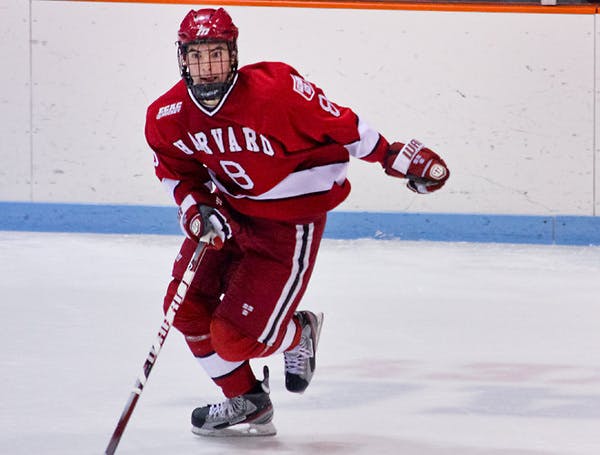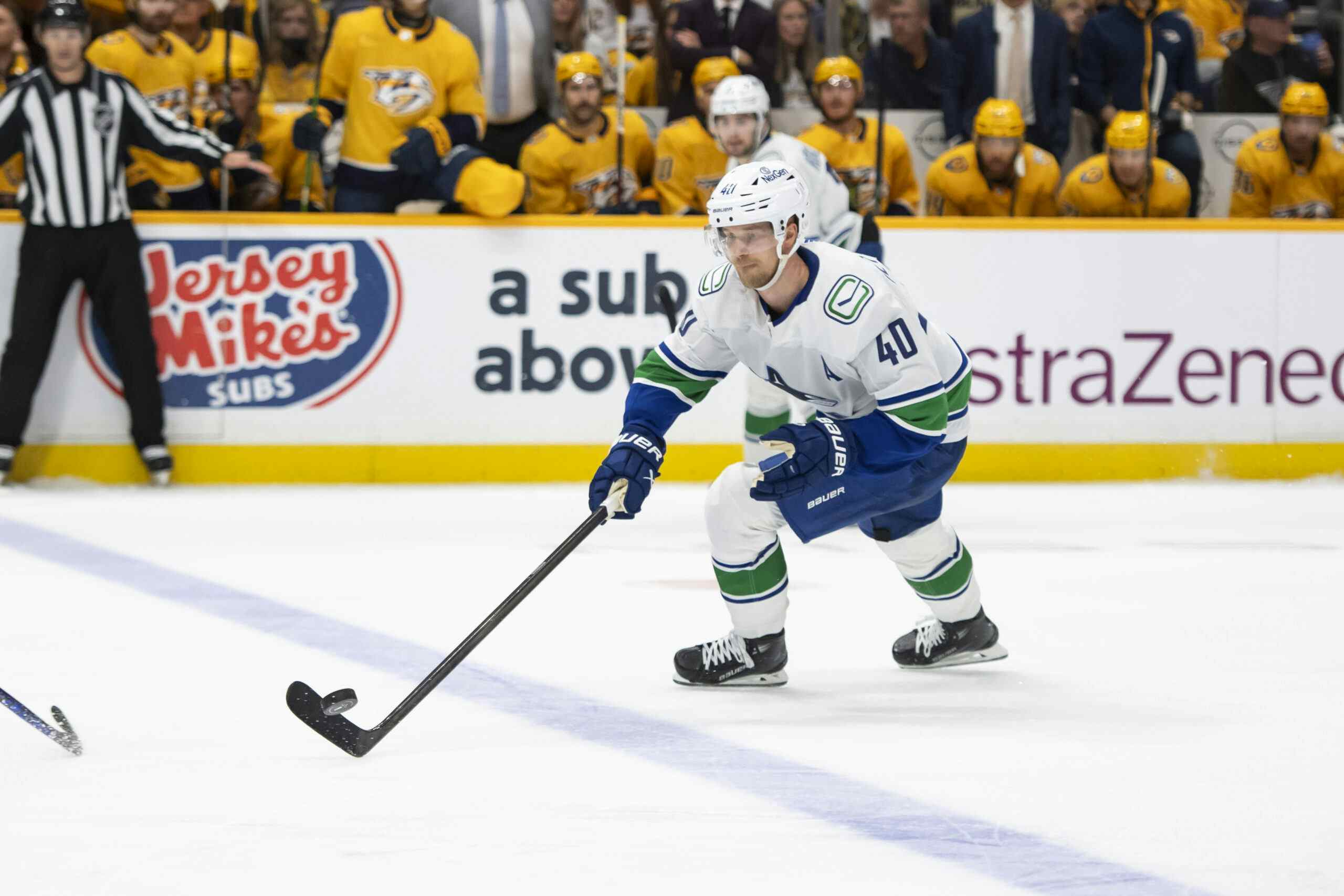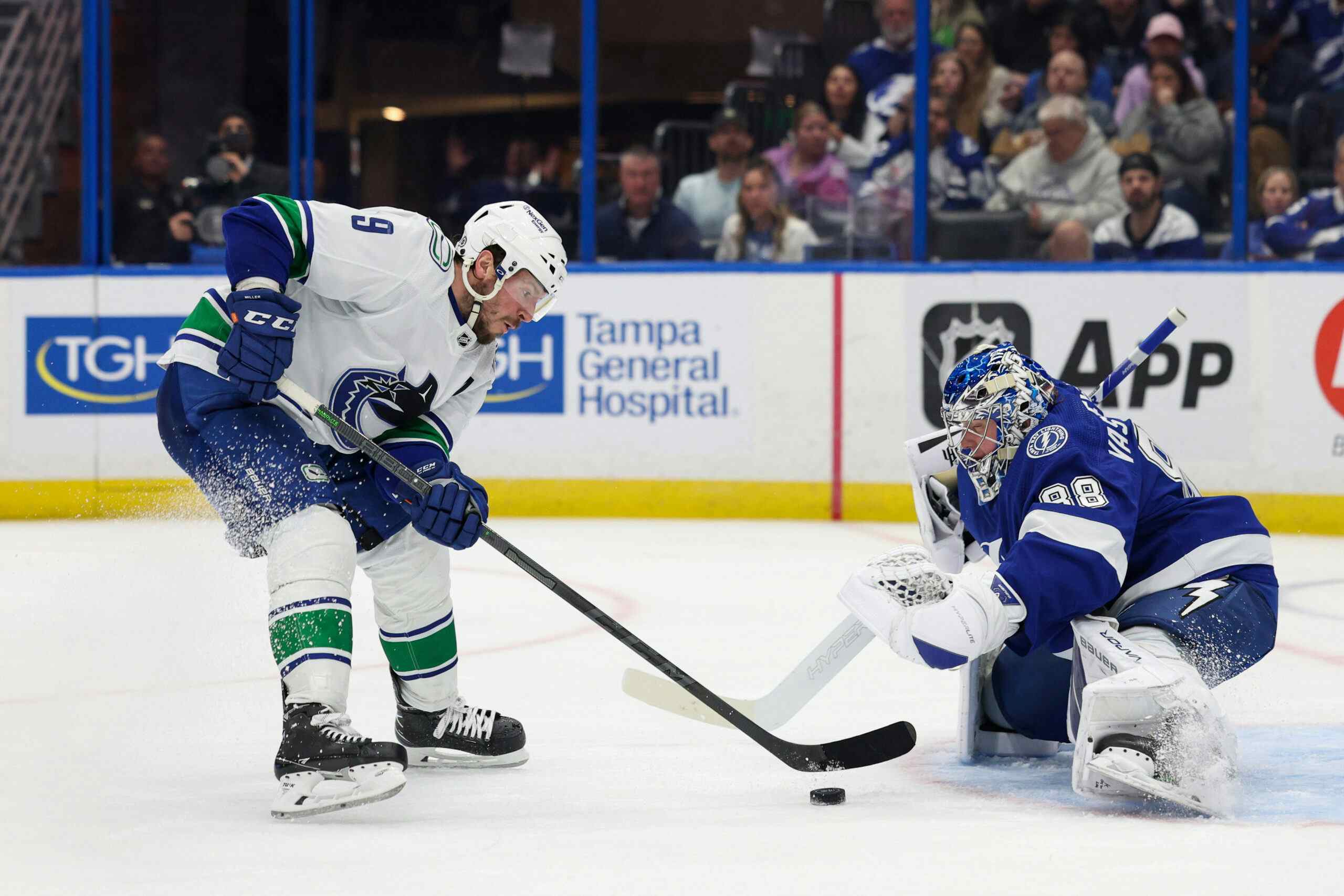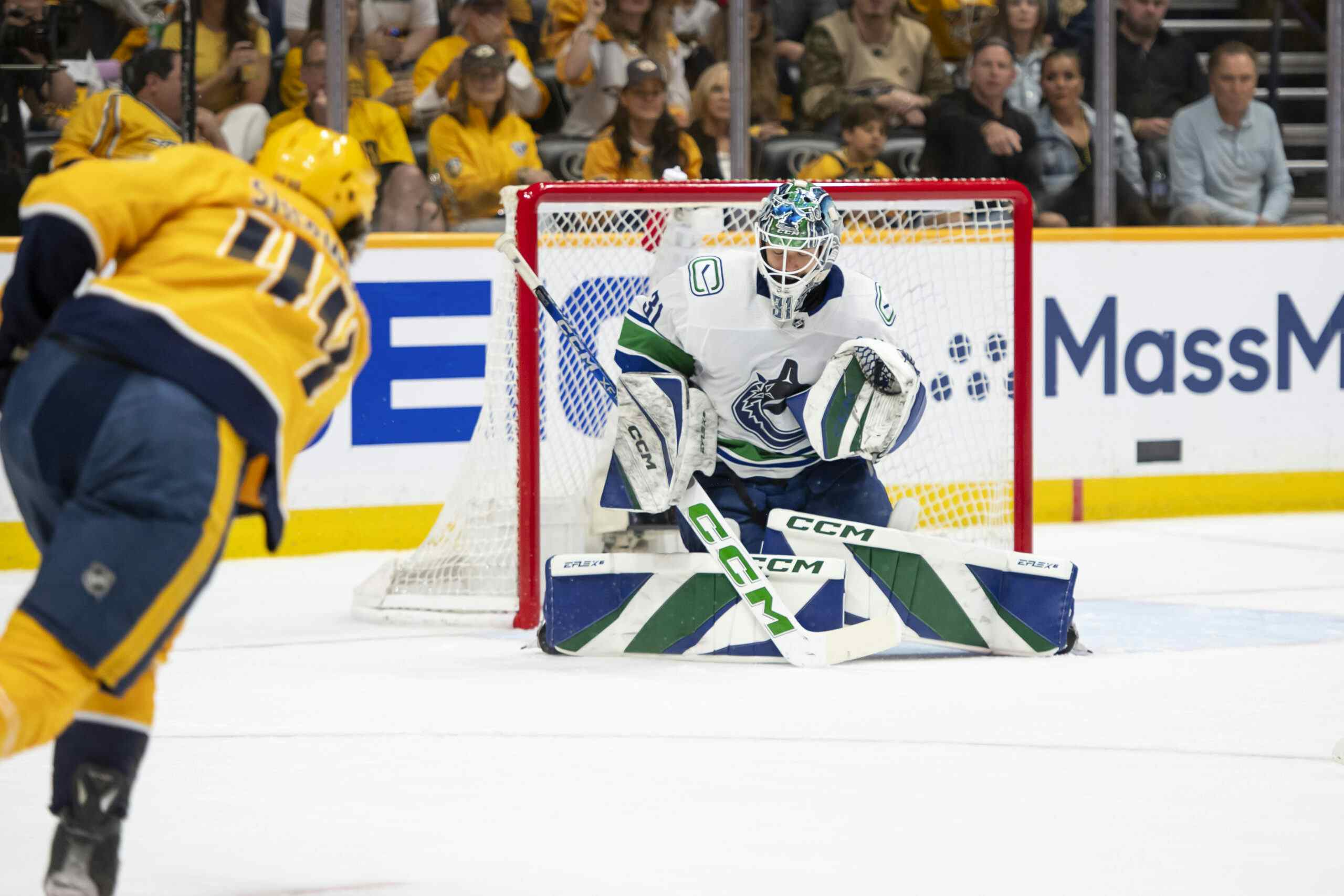The Top 20 Canucks Prospects: An Update (Part II)
By Jeff Angus
11 years ago
We here at CanucksArmy published our top 20 prospects list this past summer, and have provided follow up coverage on a lot of the organization’s prospects this season, especially those playing in Chicago with the Wolves. However, there are many notable prospects in the organizaton playing elsewhere – the CHL, NCAA, or over in Europe. Although the season is only a few months old, why not check in and see how the top 20 prospects are faring?
This week, Alexandre Grenier, Patrick McNally (seen above), Billy Sweatt, Anton Rodin, and Alex Friesen are profiled.
Watching Grenier play towards the tail end of the QMJHL season, and comparing it with what I saw in September, was night and day. Grenier was a fixture on the Mooseheads power-play, he moved the puck well, he showed off a dangerous shot, and he even filled in playing the point with the man-advantage when Halifax’s blue-liners were ravaged by the injury bug. You’re unlikely to be tasked with playing the point on the power-play if you’re not a skilled forward…
In 20 games over in Austria this season, Grenier has four goals and 12 points. He missd a few games back in October due to a concussion, which he suffered after being on the receiving end of a vicious head shot. His production is a bit disappointing considering the quality of play in Austria (the league is far from terrible though, probably between the AHL and ECHL in terms of quality). One of Grenier’s teammates is former Kelowna forward Justin Keller, who had a 50 goal season with the Rockets back in 2005-06. The Canucks played a role in getting Grenier over to Austria but as expected the 6-5, 200 pound forward is still very much a work-in-progress.
Patrick is certainly on his way to becoming one of the better two-way defenseman in college hockey. As a freshman, he played behind some pretty experienced, high-end collegiate defenseman and you could see him really blossom throughout the year. His offensive skills are unquestioned, and they were noticeable right away. His vision, puck skills and passing are already among the top 15 or 20 defenseman in the country, and he skates extremely well.
McNally’s 2011-12 season went about as well as anyone in the Canucks organization could have imagined. The swift-skating defenseman played a large part on one of college hockey’s best power plays (finishing the season with 28 points in 34 games). However, McNally has experienced some bouts of poor play this season at both ends of the ice. Now a sophomore, he has more pressure and expectations to produce this season (especially considering Harvard’s 2011-12 leading scorer, Alex Killorn, is now playing pro hockey in the Tampa Bay organization). Through seven games, McNally has a single goal and two helpers. His power play partner, defenseman Danny Biega, isn’t faring much better. Biega has zero goals and three helpers in those seven games, after scoring 10 goals and finishing with 35 points in 34 games last season.
McNally has 14 shots on goal through seven games, as well. A slow start to the season isn’t overly concerning (as long as he can find a way to turn things around), and he still has arguably the most upside of any Canucks defenseman.
Sweatt can handle tough minutes at an AHL level. Being able to handle similarly tough minutes in the NHL is of a different order – especially with how Alain Vigneault used his third and fourth lines last season. While Sweatt’s offensive upside may be more limited than it was initially thought when he was drafted by the Blackhawks, there is plenty of evidence to suggest that Sweatt will bring solid defensive value at the NHL in not too distant future.
Unlike McNally and Grenier, I have seen Sweatt play a lot this season. For the most part, he has been impressive, and it is not hard to project him as a solid bottom-6 NHL forward in the near future.
He’s strong and a very powerful skater. He has decent hands and sees the ice relatively well, and will likely find a spot in the league as a gritty third line winger capable of chipping in with 10-15 goals per season. His production with Chicago (only three goals and five points in 14 games) doesn’t exactly scream "NHL upside," but no one one the Wolves is generatating all that much offense. Also, head coach Scott Arniel loves to juggle lines, and Sweatt has also had to deal with having a few extra forwards around thanks to the NHL lockout.
Sweatt is a guy who could provide value to the Canucks in the next year or two – he will be a cheaper depth option than a veteran free-agent, and that could come in handy as the Canucks are expected to face financial constraints in dealing with what will likely be a reduced salary cap.
It’s not just Rodin’s size – or lack thereof – that’s a cause for concern. The fact, high-end skills aside, Rodin really struggled to produce in Chicago last season. In Rodin’s rookie campaign in the AHL, he scored 10 goals and added 17 assists in 62 games, averaging 1.62 shots per game primarily playing a third line role. Those numbers are worrying, and Rodin’s production translates to only 16 NHLE points (the second lowest total among all Canucks forwards prospects).
Once again, Rodin’s lack of production is a concern. As mentioned with Sweatt, the Chicago lline combinations have been switched up quite frequently, and it is tough for forwards to find chemistry with linemates if they are constanty changing. He seemed to find some nice chemistry when matched with Brett Sterling against the Milwaukee Admirals on Tuesday night, and notched three assists. That’s a good start, but Rodin needs to be more productive regarldess of the role he is in or who he is playing with.
In 12 games this season, he has yet to find the back of the net (although he does have five assists). While he does look bigger and stronger compared to last season, that hasn’t translated over into any sort of tangible improvement. Perhaps if and when the lockout ends, Rodin can take advantage of the increased ice time and offensive responsibility that will be thrown his way.
He’s a very durable player. Despite playing a very tenacious, in your face kind of style, he never once dipped below the 60 games played mark in the last four years of his OHL career. He’s also a very good skater, which gives him elusiveness. He’s certainly not an easy player to line up for a hit. All the things that Friesen does incredibly well, like being a good forechecker, being a good penalty killer, and being a good face-off man are all things guys of his size excel at at the NHL level.
Friesen’s early season struggles with Chicago highlight the differences between the CHL and AHL. The players are bigger, faster, and smarter, and you have to be a lot quicker with processing the game. Friesen remains an intriguing prospect, but he isn’t as close to the NHL as many had thought heading into this season. He has suited up for only nine games with the Wolves (once again, a victim of the lockout-related numbers game), and has only two assists to show for his play. Friesen hasn’t had the same physical impact he had at the OHL level, although he has been more than willing to throw his weight around (and even dropped the mits last week). Once he learns to pick his spots better, he will be a more effective physical presence.
Friesen has NHL upside, especially as a defensive zone start specialist, but the Canucks will need to be patient with him. He excelled as an undersized center in junior hockey, and now he has to figure out how to play the same kind of game against much better opponents.
The players from the rest of the top 20 list will be updated in the coming weeks.
Recent articles from Jeff Angus





